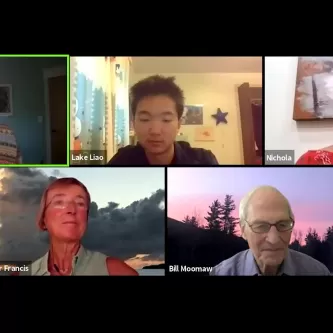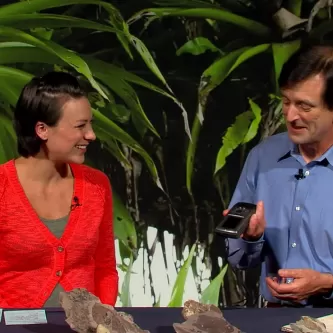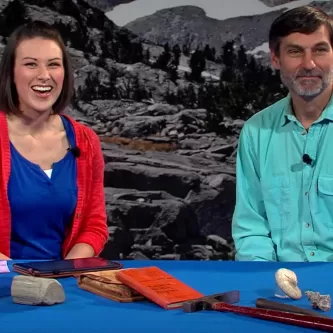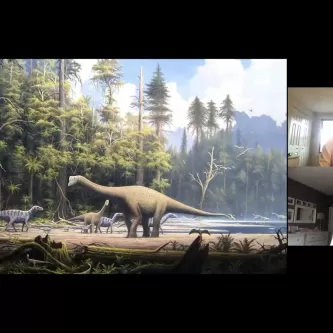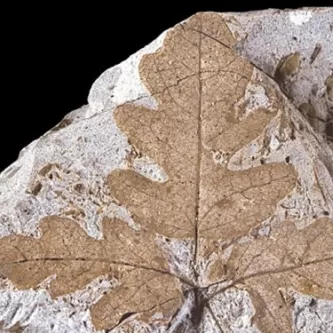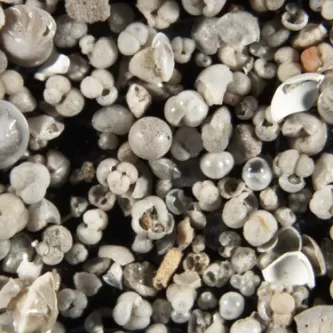Search
Global Climate Change in Perspective
The Anthropocene
We live in a unique era of global-scale changes caused by human activities. As a species, Homo sapiens (humans) stand out in our remarkable ability to alter environments to meet our needs. Our influence over ecosystems on Earth has led many to dub this era the “Anthropocene,” or Age of Man.
Our capabilities come with a cost as we grapple with how to handle the side effects of the alterations we’ve made. Prodigious use of fossil fuels to power cars, homes, and industry has caused the unintended side effect of global warming. Consequences include melting glaciers, rising seas, shifting coastlines, and acidifying oceans.
Smithsonian anthropologist Dr. Igor Krupnik studies the responses of Arctic communities to global warming. Arctic people, facing the loss of ice they depend on for hunting, shelter, and transportation, are shifting cultural norms developed over centuries of life on the ice.
While shrinking sea ice is a visible indicator of change, people around the globe face unstable weather patterns associated with a warming planet.
Climate in Geologic Time
Yet, the Earth is no stranger to global changes in climate. Climate has changed continuously over Earth’s 4.5 billion year history. How do we know? Much of the evidence is chemical, such as variation in the types of oxygen molecules in ancient ice or fossils. Scientists use bubbles in ice cores (deep vertical samples of polar ice caps) to reconstruct the composition of the atmosphere.
The oldest ice on our planet, though, is 800,000 years old. To track climate further back, through most of Earth’s history, scientists rely on fossils and rocks. They measure the chemical composition, but also identify fossils to see what types of organisms were present at a given place and time.
For example, Smithsonian paleobiologist Dr. Brian Huber learns about past ocean conditions by studying the oxygen chemistry of tiny ocean organisms called foraminifera. Using fossil foraminifera shells extracted from ocean cores (vertical samples of sediments), he finds a record of climate change as far back as 120 million years.
Taking a long-term view of climate change gives us geologic perspective on today’s changes. For the past two million years, the Earth has been alternating rapidly (in geologic terms) between glacial and interglacial periods. The Earth was also experiencing glacial cycles 330-299 million years ago during the period called the Carboniferous.
However, the Carboniferous was interrupted by several rapid warming events, the most severe one 306 million years ago. Smithsonian paleobotanist Dr. Bill DiMichele studies this warming event by collecting and analyzing plant fossils from coal mines and natural outcrops. Fossils from across Europe and North America reveal a drastic ecological response. When the warming occurred, swamp forests dominated by giant club moss trees gave way to forests rife with ferns and other weedy plants.
Heat-Trapping Gases Now and Then
Today’s global warming and some past warming events share a common cause: greenhouse gases. Certain gases, including carbon dioxide, water vapor, and methane, absorb and radiate heat well. In our atmosphere, these heat-trapping gases act like a blanket, slowing the loss of heat to space and making the Earth warmer. Without heat-trapping gases, the Earth would be too cold for human life, but a large increase causes global warming.
Carbon dioxide is a suspect in a global warming event that happened about 90 million years ago (mid-Cretaceous era). Brian Huber’s studies of foraminifera show that ocean temperatures were the warmest they had been in the past 150 million years. The balmy temperatures on Earth supported forests and dinosaurs in both polar regions. This ”supergreenhouse” climate was likely caused by massive releases of carbon dioxide and other gases from undersea volcanoes.
A later warming event that began 56 million years ago and lasted for over 100,000 years has also been linked to heat-trapping gases. Release of thousands of billions of tons of heat-trapping gases over a few thousand years into the atmosphere caused temperatures to climb. Smithsonian paleobotanist Dr. Scott Wing uses fossil leaves from Wyoming to study this Paleocene-Eocene Thermal Maximum (PETM) event. Many plant species were locally extirpated, while others adapted to the warmer climate alongside new species that arrived from areas farther south.
Global Warming Today
Unique to today’s global warming are the sources of heat-trapping gases and rates of change. Heat-trapping gases during the PETM event came from natural events. Huge eruptions that forced carbon out of rocks were followed by warming oceans that freed methane gas from ocean floor deposits. But most modern carbon emissions come from burning fossil fuels (coal, oil, gas) for transportation and industry, and from certain chemical reactions (such as making cement). Human-caused carbon emissions are setting the atmospheric stage for current and future warming.
Also, the rate at which carbon is entering the atmosphere today is many times greater than the PETM carbon emissions. And, while temperature changes in the PETM appear drastic in geologic time, the rate of temperature change today is more than ten times what occurred then. During the Anthropocene, humans have been successful enough as a species to cause global changes in the systems that make Earth habitable.
From the Past to the Future
As we struggle to cope with today’s unique changes, scientists look to the past to understand what might happen in the future. Smithsonian anthropologist Dr. Daniel Rogers, with the Center for Social Complexity, develops models of how human societies have tended to interact with their environments. Based on data about the past, such as Dr. Torben Rick’s archaeological studies of how Native Americans interacted with the Chesapeake Bay, he predicts future ecosystem responses and societal implications of the warming climate.
By looking backward through time at how the Earth and humans have responded to changes in climate, we can better prepare ourselves for what is to come. Unique to climate change today is not only that we are causing it, but also that we can understand how. With our hands on the Earth’s thermostat, we will collectively decide if we are going to continue to turn it up, or not.

